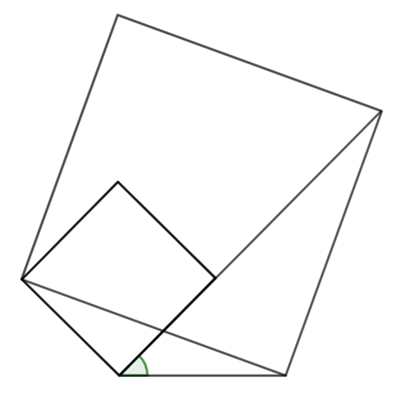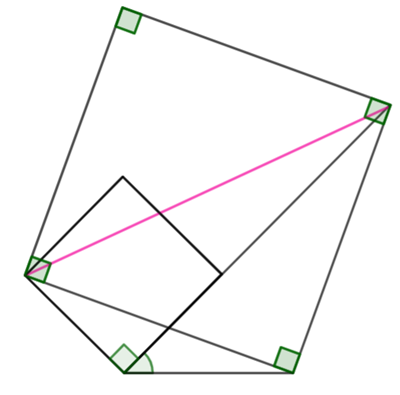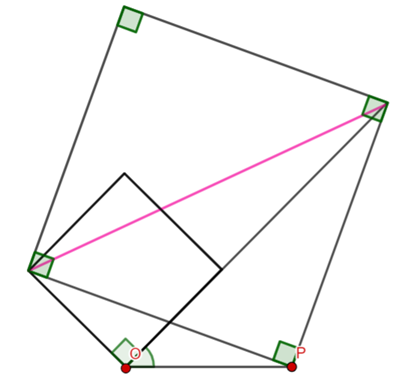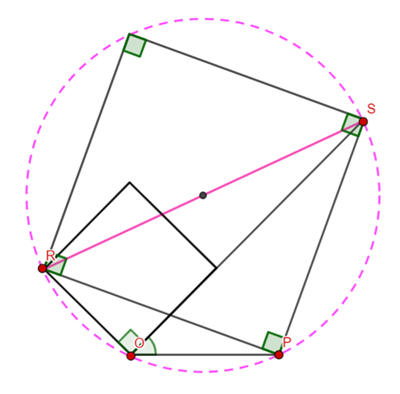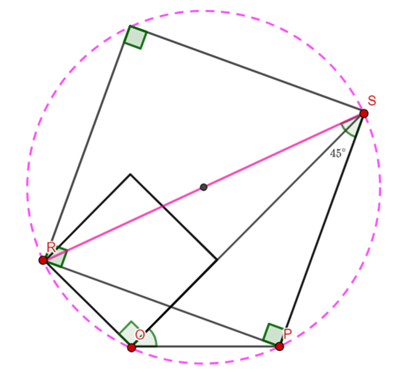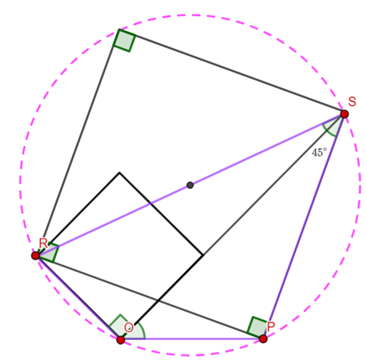Two circles of radius ![]() and
and ![]() intersect as shown. What is the area of the shaded region?
intersect as shown. What is the area of the shaded region?
From Professor Povey’s Perplexing Problems
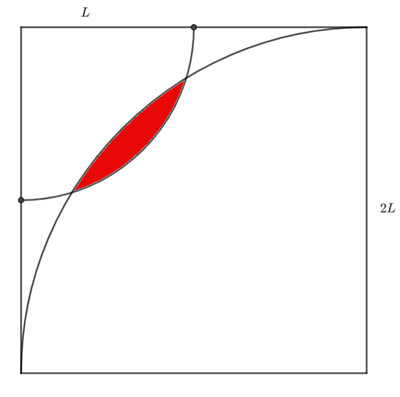
My plan is to find the sum of the area of the two segments (see below).
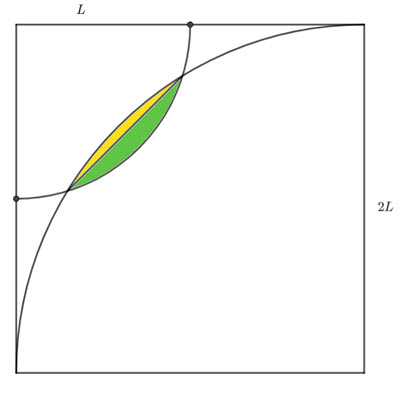
Construct triangles
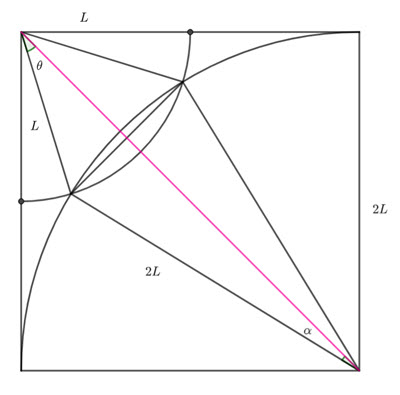
The diagonal of the square (the pink line above) has length
![]()
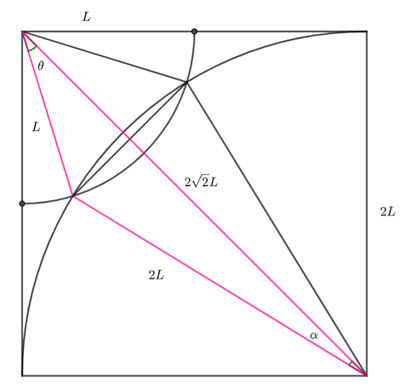
From the pink triangle in the above diagram, I am going to find the angles using the cosine rule.
![]()
![]()
![]()
![]()
![]()
![]()
![]()
![]()
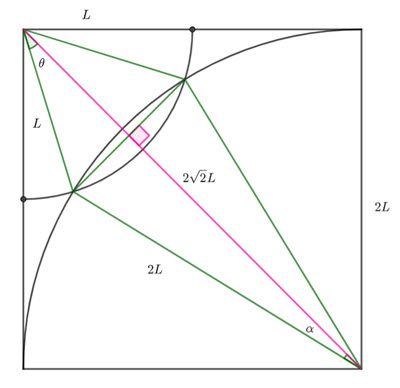
The green quadrilateral is a kite, which means the diagonals are perpendicular.
This means the segment angles are ![]() and
and ![]() (because the triangles are isosceles and the diagonal is perpendicular to the base of the triangles).
(because the triangles are isosceles and the diagonal is perpendicular to the base of the triangles).
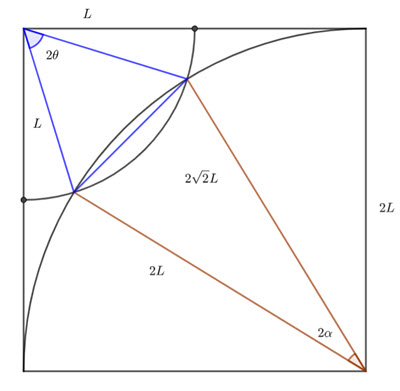
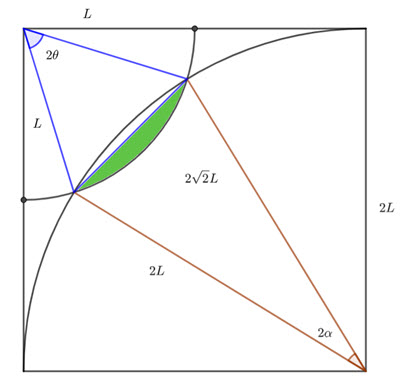
Area of green segment
![]()
![]()
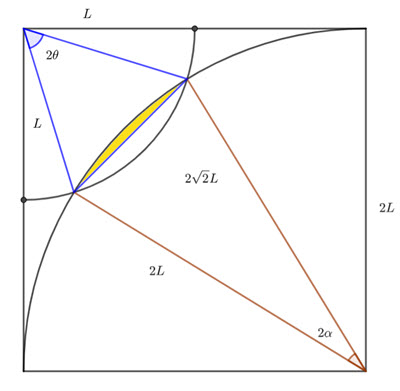
Area of yellow segment
![]()
Total Area =![]()

